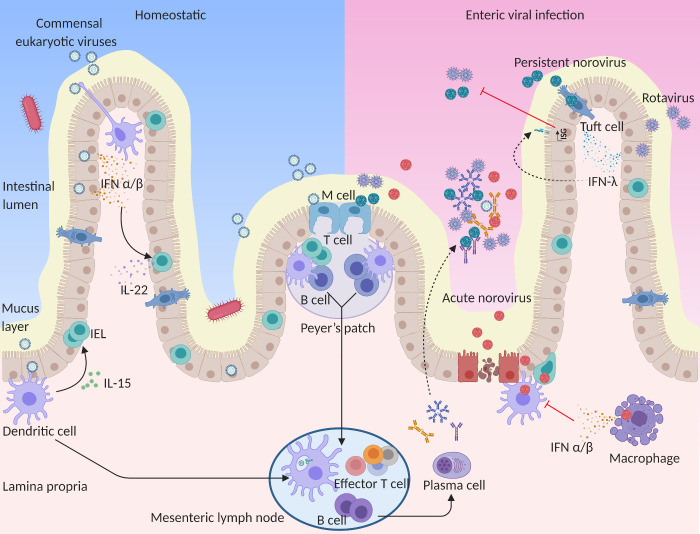Figure 2.
Eukaryotic virus interactions with the intestinal immune system. In homeostatic states, commensal viruses stimulate basal type I IFN and IL-15 expression that maintains the antiviral state and sustains intestinal homeostasis. Type I IFNs stimulate IL-22 production from innate lymphoid cells to protect IECs, and IL-15 promotes IEL biogenesis. In the case of enteric viral infections, IFN-λ is induced, likely from epithelial cells, to protect IECs from epithelial tropic viruses including rotavirus, NoV, and astrovirus. Viral pathogens can also transit through the epithelium to infect or induce immune responses from lymphocytes or phagocytes in the lamina propria. The induction of type I IFNs mediates broad systemic control of infections but can also contribute to consequent immune pathology. During viral infection, intestinal phagocytes including lamina propria DCs, macrophages, and DCs in the epithelial dome of Peyer’s patches can also sample viral antigens at various sites. Antigen-laden DCs migrate to the mesenteric lymph nodes, where they present processed antigen and induce T and B cell responses. Induced B cells can differentiate into PCs, which home to the lamina propria and secrete antigen-specific IgG, IgM, and IgA. These Igs transcytose across the epithelial cell layer to provide protection against intestinal viral infection. Solid lines indicate the migration of immune cells, while dashed lines indicate secretion of antibodies and cytokines to the intestinal lumen. Image created with BioRender.

